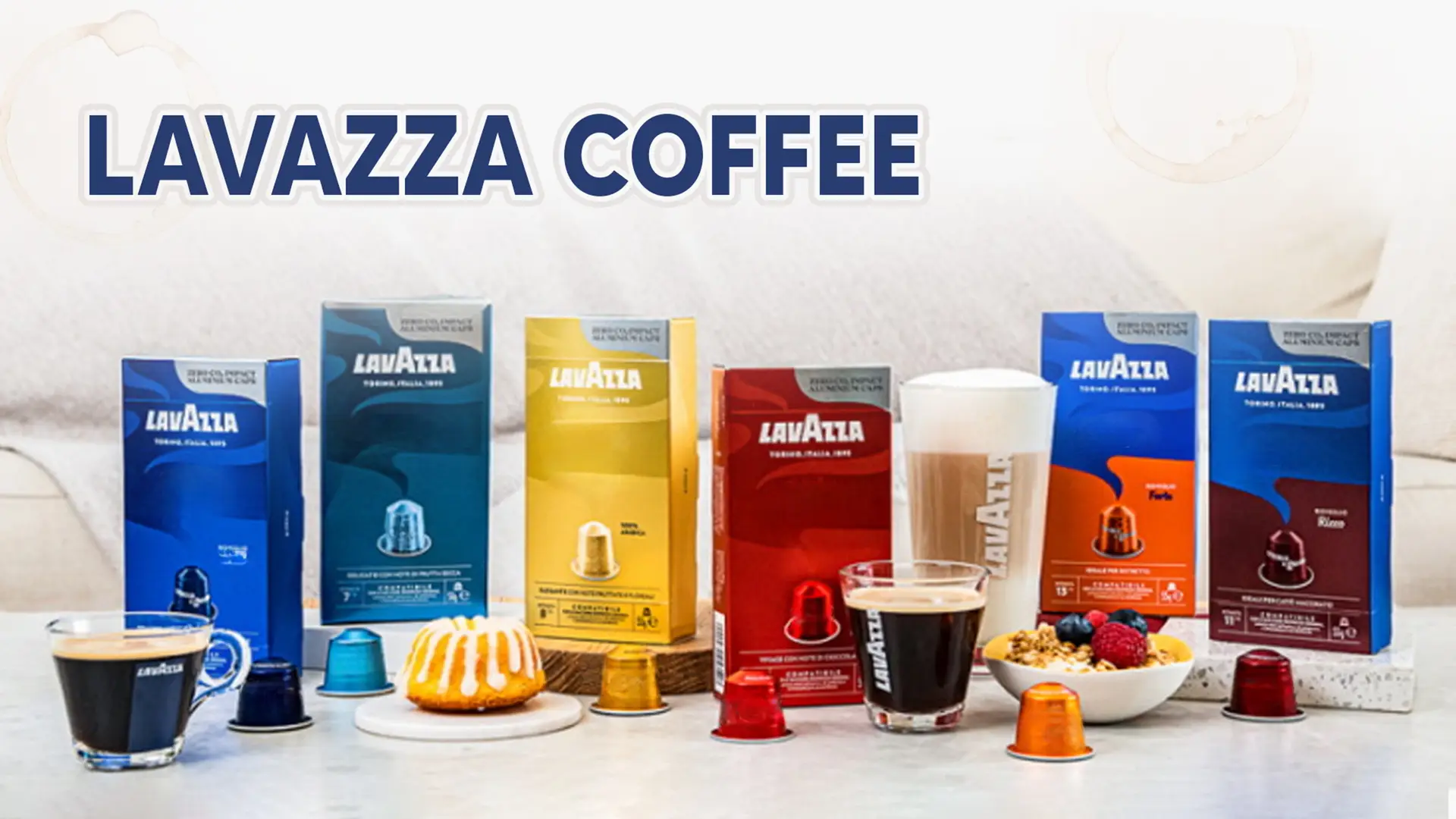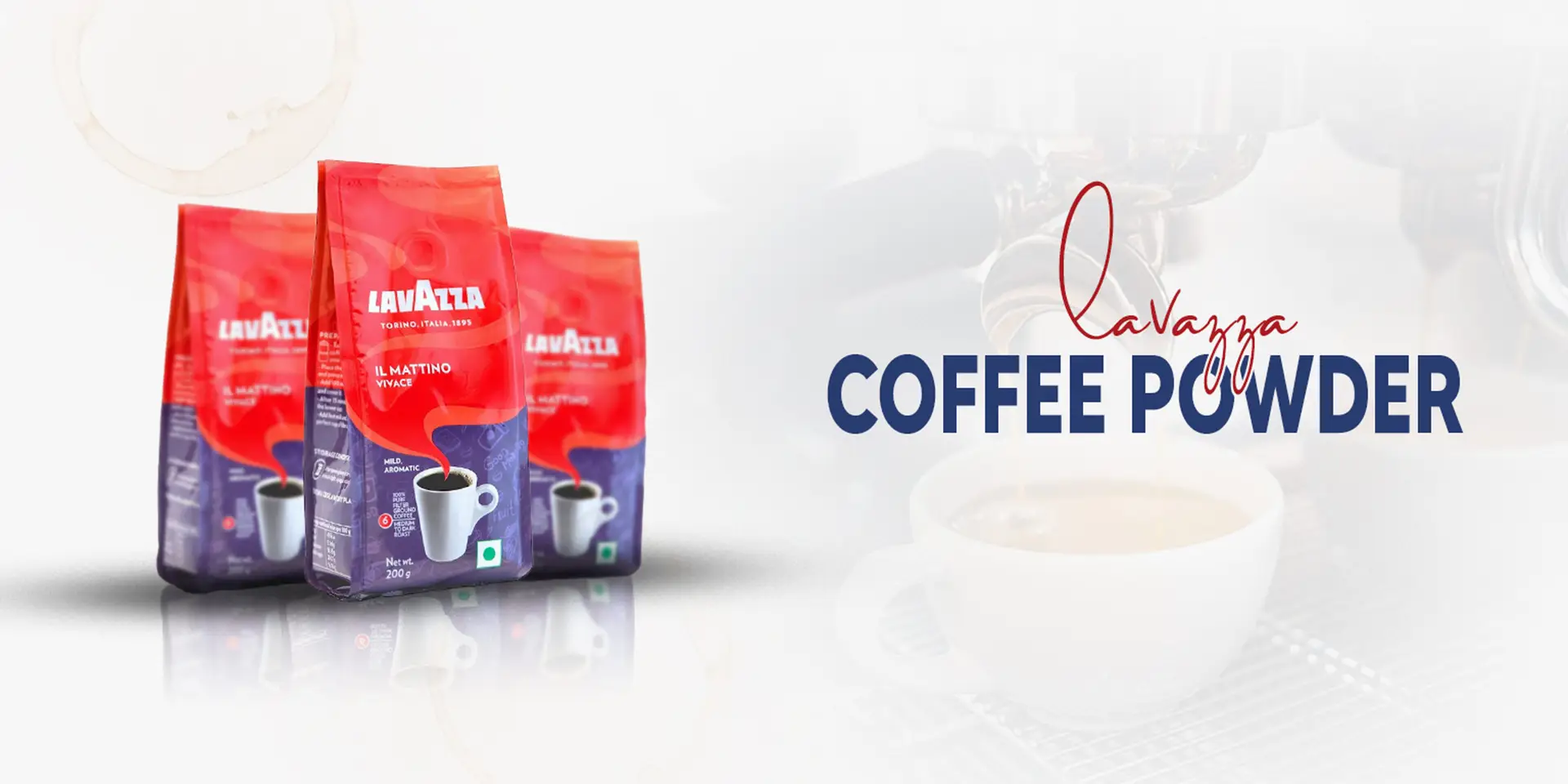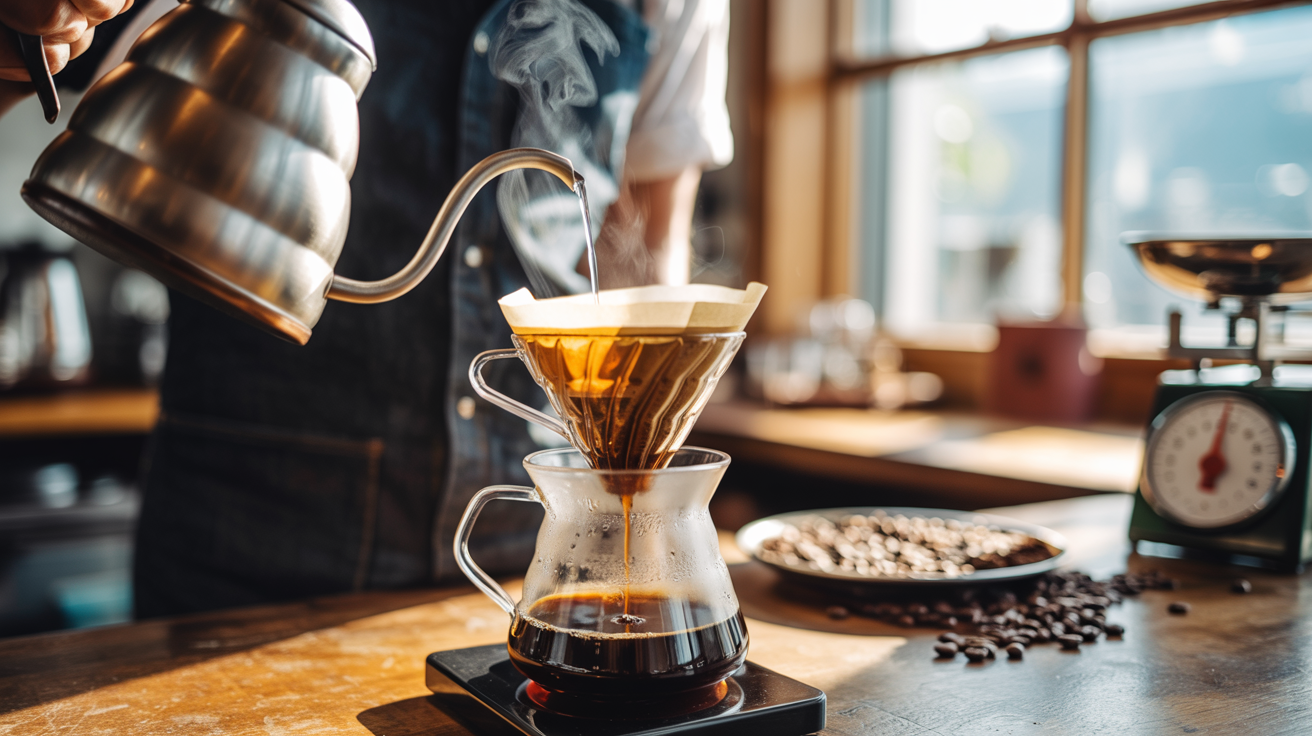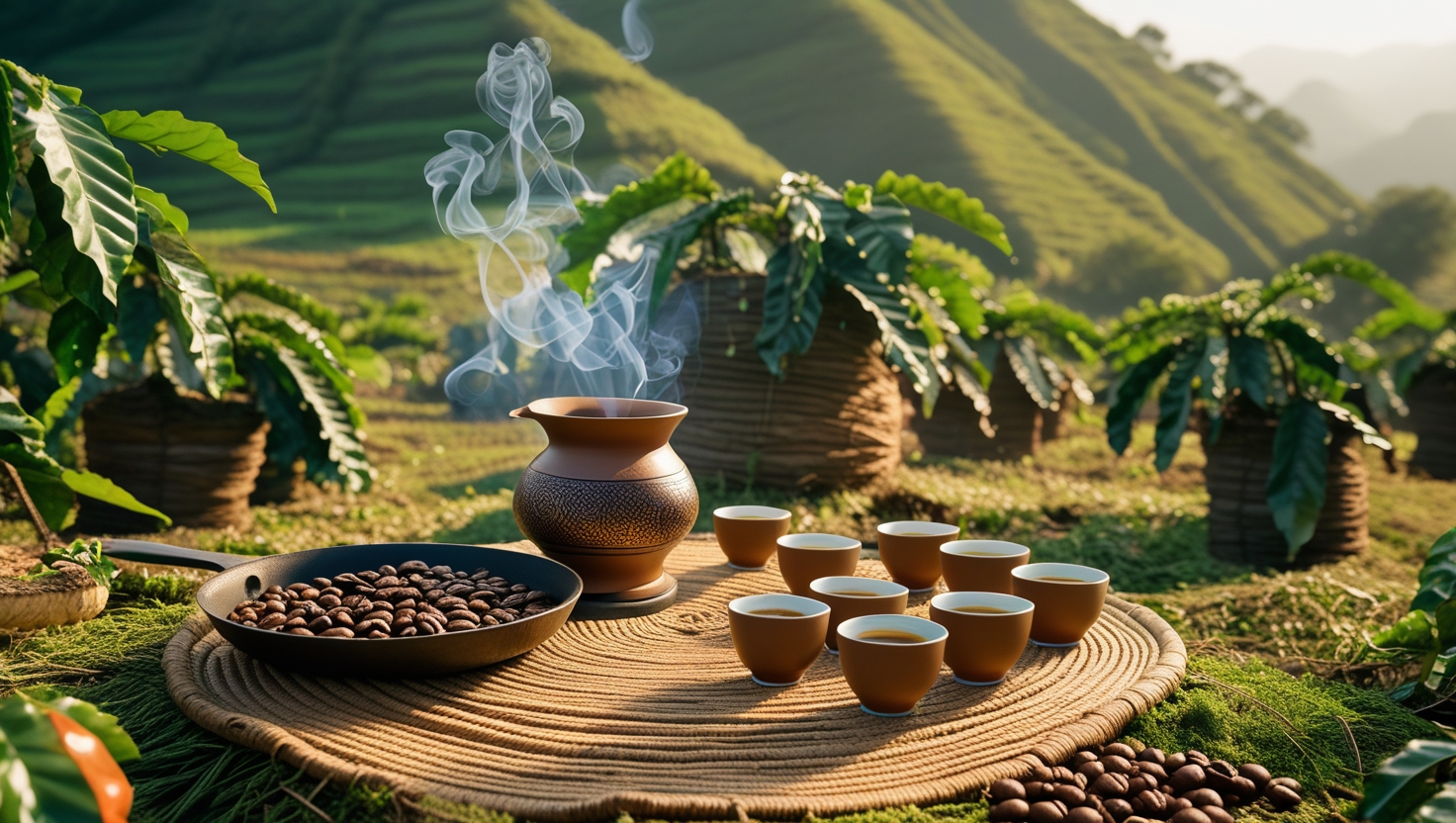Pour Over Coffee: How to Brew the Perfect Cup Every Time Pour Over Coffee: How to Brew the Perfect Cup...
Read MoreLavazza Coffee: Rich, Premium Italian Blends for Every Coffee Lovers

Lavazza Coffee: Rich, Premium Italian Blends for Every Coffee Lovers


Introduction to Lavazza Coffee
A brief overview of Lavazza as an Italian coffee icon.
Lavazza Coffee has been known around the world for its Italian coffee culture, coffee production, and exquisite blends for over a century. Based in Turin, Lavazza was started in 1895 and has now become a global leader as well as a household name. A signature blend is crafted by sourcing beans from different regions. The Lavazza process is Lavazza has an Italian icon that sources coffee beans from all over the world to serve ethnic tastes. As a global brand, Lavazza is not only innovative in coffee brewing but also sustains the environment, which cements its status as an Italian coffee icon. Lavazza’s passion for authentic Italian coffee inspires enthusiasts globally, appealing to both casual drinkers and connoisseurs.
Lavazza Coffee – A Taste of Italy
Lavazza Coffee Italy: The Birthplace of Excellence
Lavazza Coffee Italy begins with a tale of passion and innovation dating back to 1895 when Luigi Lavazza opened a grocery store in the city of Turin. Recognizing the benefits of coffee, he set out to mix different roasted beans to create new tastes, which would mark the start of a unique legacy. Lavazza’s pioneering, innovative approach gave rise to many blends that became famous across Italy in no time. Turin, the very first city to claim Lavazza coffee, became a centre of passion for coffee lovers and helped build the brand Lavazza to what it is today: a name symbolizing top-notch Italian coffee culture. Even after more than a century, Lavazza cherishes their history.
Discuss how Lavazza captures the essence of Italian coffee culture.
Lavazza’s commitment lies in celebrating coffee culture, which Italians take pride in, through Lavazza coffee. With more than a century of experience, Lavazza knows the nuances of coffee, which is why Lavazza meticulously sources coffee beans from the best regions globally. The brand’s signature blends capture all espresso traditions and passages of Italy, which is a celebration of the mastery of Italian baristas. While Lavazza adds value to drinking coffee with sustainable practices, it’s also a promoter of Italy’s rich cultural heritage. These practices allow Lavazza to preserve Italian culture, which is why Lavazza is able to maintain its commitment to all coffee lovers around the globe.
Why Lavazza Coffee is Loved Worldwide
The global appeal of Lavazza coffee and its iconic status.
Lavazza Coffee has gained world recognition due to its quality and rich flavour. You can find Lavazza in many different households around the world. You might be wondering, Why is Lavazza Coffee Loved Worldwide? It is connected to the brand’s heritage, constant taste, and sustainability initiatives. Speaking of ethical coffee brands, Lavazza heavily impacts the world through their ethical and environmental friendliness. From coffee blends to pods and ground coffee, Lavazza surely delivers a premium Italian coffee experience. These products can be found in multiple homes and cafes, which shows how loyal customers trust the brand.
Emphasis on quality and consistency across different countries.
Lavazza Coffee’s never-ending dedication to consistency in quality has been celebrated globally. This Italian brand handpicks premium quality coffee beans from various parts of the world; every blend radiates its distinct personality while providing a comforting taste. Lavazza’s stern quality control regulations guarantee that every cup served, be it in a busy cafe in Rome or a calm kitchen in New York, is of the highest standard. The global brand’s promise of top-quality coffee cultivates trust and loyalty among its consumers, allowing Lavazza to maintain its longevity as a leader in the global coffee industry.

Lavazza Coffee Beans – The Perfect Brew
Discuss the high-quality beans used by Lavazza.
Lavazza Coffee is appreciated by many because it’s trusted to deliver the best coffee beans. Lavazza is famous for maintaining the best quality of premium Arabica and Robusta coffee beans. These beans are sourced from the finest regions in the world and pass through severe quality checks. Why Are Lavazza Coffee Beans Different? It has a unique taste and beans, and the individual beans, combined with the expert’s skillful roasting, create a perfect blend for coffee lovers. Each coffee Lavazza bean is selected with great care so that with every sip, the rich flavor of coffee is fully appreciated. Lavazza secures its leadership in global coffee by infusing Italian coffee culture into its products.
Types of coffee beans (Arabica, Robusta) and their unique flavor profiles.
Knowing the various types of coffee beans is essential in understanding what makes each bean unique in its flavor profile. Specialty coffees are made from Arabica beans, which are smooth in flavor and mildly sweet with beautifully complicated levels of acidity. These beans are found in higher altitudes and are widely regarded as the best tasting. Robusta beans, on the other hand, have a much stronger and bolder flavor with prominent earthy and nutty undertones; this allows for these beans to pack more caffeine. With more affordable growing conditions and tolerance to pests, these beans are easier to cultivate. These two varieties are key to Lavazza’s popular blends and define the brand’s distinct features.
Choosing the Best Lavazza Coffee Beans for Your Brew
Guide on selecting the right Lavazza beans for different brewing methods (espresso, drip coffee, French press, etc.).
In regard to Lavazza coffee beans, picking the finest one for brewing is important. For espresso, I suggest Super Crema or other rich blends by Lavazza, as they provide great creamy and bold-flavoured espresso. For drip coffee, Club’soma Club’s elite blend possesses a fine balance which is accentuated in larger servings. If French press is your choice, then go for Lavazza Gran Selezione, which is wonderfully full-bodied and aromatic. All of these vary in strength, ensuring Lavazza coffee beans are able to provide you with a fantastic, delicious coffee experience. Enjoy finding the perfect match for your preferred brewing style.
Top Lavazza Coffee Bean Varieties
Highlight the most popular Lavazza bean varieties such as Lavazza Super Crema, Lavazza Crema e Gusto, etc.
Coffee enthusiasts from across the world are captivated by super Lavazza coffee bean features such as Lavazza Super Crema. Crema e Gusto is adored for its rich taste and great aroma, while Moka pots are designed for drip coffee. Other flavours include Gran Selezione, which combines Arabic and Robusta beans for an aromatic experience company’s company’s signature texture. All these renowned blends are perfect examples of the dedication Lavazza puts forth in regard to its products and the consistency of its products, which guarantees that its customers receive Italian coffee culture in every sip.
Lavazza Espresso Review – Is it Worth the Hype?
Review of Lavazza Espresso – The Bold, Rich Experience
With this review, we observe espresso’s notable blends that are bold and rich in taste. A key blend is Lavazza Super Crema, which combines the sweetness and creamy texture that espresso drinkers love. For a stronger taste, Lavazza Espresso Italiano offers the profile of deep chocolate and rich aromatics. Another remarkable blend is Lavazza Gran Espresso, which fuses Arabica and Robusta beans to create a full-bodied blend with a nice punch. Each blend is Lavazza’s passion and commitment towards quality espresso, which is why coffee lovers Lavazza’s Lavazza’s espresso for an authentic Italian experience.
Taste, aroma, strength, and overall experience of drinking Lavazza espresso.
Lavazza espresso is the drink for you if you are looking to combine your favorite drink with a rich taste and enticing aroma. With a strong but well-balanced brew, drinking it will offer you an experience like no other. Each blend offers diverse flavors, including chocolate, nuts, fruits, or flowers, catering to various taste preferences like Lavazza espresso. The fragrance matches the flavor, captivating coffee aficionados with its lively and enchanting scent. Lavazza espresso is smooth and bold, offering a satisfying kick without overwhelming bitterness. Lavazza masterfully blends rich flavors and inviting scents, ensuring every coffee lover enjoys a delightful journey with each sip.
Compare Lavazza espresso with other popular brands in terms of quality and taste.
Lavazza espresso vs other brands is a common debate among coffee enthusiasts, and Lavazza espresso is incomparable to other popular brands of espresso. Many others don’t combine their beans, but Lavazza does, which allows Lavazza to capture fresh, smooth and rich espresso beans that even casual coffee drinkers love. Instead of the traditional blend that brands like Illy and Starbucks offer, which is more on the floral or bitter side, Lavazza provides a unique blend that is not too overpowering but provides deep chocolate undertones. In comparison to other brands, Lavazza espresso tastes authentic Italian and is a perfect pick for espresso lovers.

Lavazza’s career opportunities for coffee lovers.
Lavazza provides various job opportunities for those interested in the world of coffee. The company is committed to sustainable and innovative coffee production and thus welcomes candidates with a real passion for coffee. At Lavazza Coffee, there are plenty of positions available, from baristas practising their brewing techniques to marketing or product development professionals who shape the industry. Moreover, the company supports employees through training programs and workshops, ensuring that every member of staff can grow their skills. Working at Lavazza not only allows you to work with a famous name in coffee but also lets you get involved with an exciting group devoted to coffee excellence.
Discuss the company culture and why it’s a great place to work.
Lavazza is known for its lively culture, which is very attractive to both workers and coffee enthusiasts. They have a company culture that encourages collaboration, creativity and respect, where employees are able to express their thoughts and constructively innovate. Lavazza also values sustainability and ethical practices, which appeal to employees of the modern world. Besides, their extensive training and development programs provide the best opportunities for employees to improve their skills and advance their careers. The sense of community and team-building activities also improves job satisfaction. With over a century of commitment to quality and employee health, Lavazza is determined to create a social business that inspires coffee consumption and growth.
Guide on applying for Lavazza coffee careers and what makes candidates stand out.
When starting a career with Lavazza Coffee, you may come across challenges on how to apply. Begin by checking the careers page on Lavazza’s website to find positions that align with your coffee skills. You will need to demonstrate relevant experience in your application because they need to understand how well-versed you are in the coffee culture. Additionally, mention the most important parts of your resume and cover letter, such as Lavazza’s motto of innovation, teamwork, and sustainability. If you have barista or customer service experience, you will already be at an advantage. For interviews, be excited about the company’s products and your desire to maintain their standards, which makes you the best fit for the role.
Tips on brewing the perfect cup using Lavazza beans.
Lavazza coffee is celebrated for its delightful aroma and taste, making brewing the beans a delightful journey. That’s why, in this article, we will showcase the perfect step-by-step guide. The first step is choosing the correct blend. If you are looking for a rich flavor, go for Super Crema, and if you are looking for something bold, pick Espresso Italiano. Remember to get new beans and grind them in a middle size. To keep things simple, for every six ounces of water, it is advisable to put in one to two spoons of coffee. Water should be around 200°F for four to five minutes. Relax and savor the aroma of Lavazza coffee.
Different methods: Espresso, drip coffee, French press, etc.
When it comes to making coffee, there are many ways to enhance your coffee experience. Espresso is the most powerful shot. It is a concentrated shot perfect for hardcore coffee lovers. Drip coffee, on the other hand, is more mellow and easier for those who prefer softer styles or blends of coffee. French press coffee is widely praised for retaining the oil contained in the coffee beans, giving it a rich and fuller taste. Other common methods include pour-over, which has a very distinct flavour profile, and cold brew coffee, which is deliciously refreshing. Each method enhances a different aspect of coffee, helping varied reviewers appreciate it differently.
Recap of the unique qualities of Lavazza coffee.
Lavazza is well-known for its history and ecological commitments. Their unique quality blends together a wide range of flavors, which makes them famous worldwide. This eco-friendly brand guarantees you will be captivated by their coffee. Craftsmanship is central to Lavazza – skill and attention to detail are present in every step of the brewing process, from the selection of the beans to the preparation of coffee. The aroma and smooth finish are certainly expected in each cup, whether espressos or brews. Lavazza beans are loved across the globe and will forever be enjoyed by coffee lovers.
Popular Posts
White Coffee: The Unique Brew You Need to Try Today
Experience the Smooth Taste of White Coffee: Your New Favorite Drink! Experience the Smooth Taste of White Coffee: Your New...
Read MoreCoffee Beans: Discover the Best Beans for Every Brew
Unlocking the Secrets of Coffee Beans: Types, Roasting, and Brewing Unlocking the Secrets of Coffee Beans: Types, Roasting, and Brewing...
Read MoreBlueberry Coffee: A Sweet and Fruity Coffee Experience
The Ultimate Guide to Blueberry Coffee: Recipes, Benefits The Ultimate Guide to Blueberry Coffee: Recipes, Benefits Introduction: The rise of...
Read MoreEthiopia Coffee: Rich Flavors of Africa’s Best Brew
The Ultimate Guide to Brewing, Sourcing, and Tasting Ethiopia Coffee The Ultimate Guide to Brewing, Sourcing, and Tasting Ethiopia Coffee...
Read More
Introduction to Lavazza Coffee
A brief overview of Lavazza as an Italian coffee icon.
Lavazza Coffee has been known around the world for its Italian coffee culture, coffee production, and exquisite blends for over a century. Based in Turin, Lavazza was started in 1895 and has now become a global leader as well as a household name. A signature blend is crafted by sourcing beans from different regions. The Lavazza process is Lavazza has an Italian icon that sources coffee beans from all over the world to serve ethnic tastes. As a global brand, Lavazza is not only innovative in coffee brewing but also sustains the environment, which cements its status as an Italian coffee icon. Lavazza’s passion for authentic Italian coffee inspires enthusiasts globally, appealing to both casual drinkers and connoisseurs.
Lavazza Coffee – A Taste of Italy
Lavazza Coffee Italy: The Birthplace of Excellence
Lavazza Coffee Italy begins with a tale of passion and innovation dating back to 1895 when Luigi Lavazza opened a grocery store in the city of Turin. Recognizing the benefits of coffee, he set out to mix different roasted beans to create new tastes, which would mark the start of a unique legacy. Lavazza’s pioneering, innovative approach gave rise to many blends that became famous across Italy in no time. Turin, the very first city to claim Lavazza coffee, became a centre of passion for coffee lovers and helped build the brand Lavazza to what it is today: a name symbolizing top-notch Italian coffee culture. Even after more than a century, Lavazza cherishes their history.
Discuss how Lavazza captures the essence of Italian coffee culture.
Lavazza’s commitment lies in celebrating coffee culture, which Italians take pride in, through Lavazza coffee. With more than a century of experience, Lavazza knows the nuances of coffee, which is why Lavazza meticulously sources coffee beans from the best regions globally. The brand’s signature blends capture all espresso traditions and passages of Italy, which is a celebration of the mastery of Italian baristas. While Lavazza adds value to drinking coffee with sustainable practices, it’s also a promoter of Italy’s rich cultural heritage. These practices allow Lavazza to preserve Italian culture, which is why Lavazza is able to maintain its commitment to all coffee lovers around the globe.
Why Lavazza Coffee is Loved Worldwide
The global appeal of Lavazza coffee and its iconic status.
Lavazza Coffee has gained world recognition due to its quality and rich flavour. You can find Lavazza in many different households around the world. You might be wondering, Why is Lavazza Coffee Loved Worldwide? It is connected to the brand’s heritage, constant taste, and sustainability initiatives. Speaking of ethical coffee brands, Lavazza heavily impacts the world through their ethical and environmental friendliness. From coffee blends to pods and ground coffee, Lavazza surely delivers a premium Italian coffee experience. These products can be found in multiple homes and cafes, which shows how loyal customers trust the brand.
Emphasis on quality and consistency across different countries.
Lavazza Coffee’s never-ending dedication to consistency in quality has been celebrated globally. This Italian brand handpicks premium quality coffee beans from various parts of the world; every blend radiates its distinct personality while providing a comforting taste. Lavazza’s stern quality control regulations guarantee that every cup served, be it in a busy cafe in Rome or a calm kitchen in New York, is of the highest standard. The global brand’s promise of top-quality coffee cultivates trust and loyalty among its consumers, allowing Lavazza to maintain its longevity as a leader in the global coffee industry.

Lavazza Coffee Beans – The Perfect Brew
Discuss the high-quality beans used by Lavazza.
Lavazza Coffee is appreciated by many because it’s trusted to deliver the best coffee beans. Lavazza is famous for maintaining the best quality of premium Arabica and Robusta coffee beans. These beans are sourced from the finest regions in the world and pass through severe quality checks. Why Are Lavazza Coffee Beans Different? It has a unique taste and beans, and the individual beans, combined with the expert’s skillful roasting, create a perfect blend for coffee lovers. Each coffee Lavazza bean is selected with great care so that with every sip, the rich flavor of coffee is fully appreciated. Lavazza secures its leadership in global coffee by infusing Italian coffee culture into its products.
Types of coffee beans (Arabica, Robusta) and their unique flavor profiles.
Knowing the various types of coffee beans is essential in understanding what makes each bean unique in its flavor profile. Specialty coffees are made from Arabica beans, which are smooth in flavor and mildly sweet with beautifully complicated levels of acidity. These beans are found in higher altitudes and are widely regarded as the best tasting. Robusta beans, on the other hand, have a much stronger and bolder flavor with prominent earthy and nutty undertones; this allows for these beans to pack more caffeine. With more affordable growing conditions and tolerance to pests, these beans are easier to cultivate. These two varieties are key to Lavazza’s popular blends and define the brand’s distinct features.
Choosing the Best Lavazza Coffee Beans for Your Brew
Guide on selecting the right Lavazza beans for different brewing methods (espresso, drip coffee, French press, etc.).
In regard to Lavazza coffee beans, picking the finest one for brewing is important. For espresso, I suggest Super Crema or other rich blends by Lavazza, as they provide great creamy and bold-flavoured espresso. For drip coffee, Club’soma Club’s elite blend possesses a fine balance which is accentuated in larger servings. If French press is your choice, then go for Lavazza Gran Selezione, which is wonderfully full-bodied and aromatic. All of these vary in strength, ensuring Lavazza coffee beans are able to provide you with a fantastic, delicious coffee experience. Enjoy finding the perfect match for your preferred brewing style.
Top Lavazza Coffee Bean Varieties
Highlight the most popular Lavazza bean varieties such as Lavazza Super Crema, Lavazza Crema e Gusto, etc.
Coffee enthusiasts from across the world are captivated by super Lavazza coffee bean features such as Lavazza Super Crema. Crema e Gusto is adored for its rich taste and great aroma, while Moka pots are designed for drip coffee. Other flavours include Gran Selezione, which combines Arabic and Robusta beans for an aromatic experience company’s company’s signature texture. All these renowned blends are perfect examples of the dedication Lavazza puts forth in regard to its products and the consistency of its products, which guarantees that its customers receive Italian coffee culture in every sip.
Lavazza Espresso Review – Is it Worth the Hype?
Review of Lavazza Espresso – The Bold, Rich Experience
With this review, we observe espresso’s notable blends that are bold and rich in taste. A key blend is Lavazza Super Crema, which combines the sweetness and creamy texture that espresso drinkers love. For a stronger taste, Lavazza Espresso Italiano offers the profile of deep chocolate and rich aromatics. Another remarkable blend is Lavazza Gran Espresso, which fuses Arabica and Robusta beans to create a full-bodied blend with a nice punch. Each blend is Lavazza’s passion and commitment towards quality espresso, which is why coffee lovers Lavazza’s Lavazza’s espresso for an authentic Italian experience.
Taste, aroma, strength, and overall experience of drinking Lavazza espresso.
Lavazza espresso is the drink for you if you are looking to combine your favorite drink with a rich taste and enticing aroma. With a strong but well-balanced brew, drinking it will offer you an experience like no other. Each blend offers diverse flavors, including chocolate, nuts, fruits, or flowers, catering to various taste preferences like Lavazza espresso. The fragrance matches the flavor, captivating coffee aficionados with its lively and enchanting scent. Lavazza espresso is smooth and bold, offering a satisfying kick without overwhelming bitterness. Lavazza masterfully blends rich flavors and inviting scents, ensuring every coffee lover enjoys a delightful journey with each sip.
Compare Lavazza espresso with other popular brands in terms of quality and taste.
Lavazza espresso vs other brands is a common debate among coffee enthusiasts, and Lavazza espresso is incomparable to other popular brands of espresso. Many others don’t combine their beans, but Lavazza does, which allows Lavazza to capture fresh, smooth and rich espresso beans that even casual coffee drinkers love. Instead of the traditional blend that brands like Illy and Starbucks offer, which is more on the floral or bitter side, Lavazza provides a unique blend that is not too overpowering but provides deep chocolate undertones. In comparison to other brands, Lavazza espresso tastes authentic Italian and is a perfect pick for espresso lovers.

Lavazza’s career opportunities for coffee lovers.
Lavazza provides various job opportunities for those interested in the world of coffee. The company is committed to sustainable and innovative coffee production and thus welcomes candidates with a real passion for coffee. At Lavazza Coffee, there are plenty of positions available, from baristas practising their brewing techniques to marketing or product development professionals who shape the industry. Moreover, the company supports employees through training programs and workshops, ensuring that every member of staff can grow their skills. Working at Lavazza not only allows you to work with a famous name in coffee but also lets you get involved with an exciting group devoted to coffee excellence.
Discuss the company culture and why it’s a great place to work.
Lavazza is known for its lively culture, which is very attractive to both workers and coffee enthusiasts. They have a company culture that encourages collaboration, creativity and respect, where employees are able to express their thoughts and constructively innovate. Lavazza also values sustainability and ethical practices, which appeal to employees of the modern world. Besides, their extensive training and development programs provide the best opportunities for employees to improve their skills and advance their careers. The sense of community and team-building activities also improves job satisfaction. With over a century of commitment to quality and employee health, Lavazza is determined to create a social business that inspires coffee consumption and growth.
Guide on applying for Lavazza coffee careers and what makes candidates stand out.
When starting a career with Lavazza Coffee, you may come across challenges on how to apply. Begin by checking the careers page on Lavazza’s website to find positions that align with your coffee skills. You will need to demonstrate relevant experience in your application because they need to understand how well-versed you are in the coffee culture. Additionally, mention the most important parts of your resume and cover letter, such as Lavazza’s motto of innovation, teamwork, and sustainability. If you have barista or customer service experience, you will already be at an advantage. For interviews, be excited about the company’s products and your desire to maintain their standards, which makes you the best fit for the role.
Tips on brewing the perfect cup using Lavazza beans.
Lavazza coffee is celebrated for its delightful aroma and taste, making brewing the beans a delightful journey. That’s why, in this article, we will showcase the perfect step-by-step guide. The first step is choosing the correct blend. If you are looking for a rich flavor, go for Super Crema, and if you are looking for something bold, pick Espresso Italiano. Remember to get new beans and grind them in a middle size. To keep things simple, for every six ounces of water, it is advisable to put in one to two spoons of coffee. Water should be around 200°F for four to five minutes. Relax and savor the aroma of Lavazza coffee.
Different methods: Espresso, drip coffee, French press, etc.
When it comes to making coffee, there are many ways to enhance your coffee experience. Espresso is the most powerful shot. It is a concentrated shot perfect for hardcore coffee lovers. Drip coffee, on the other hand, is more mellow and easier for those who prefer softer styles or blends of coffee. French press coffee is widely praised for retaining the oil contained in the coffee beans, giving it a rich and fuller taste. Other common methods include pour-over, which has a very distinct flavour profile, and cold brew coffee, which is deliciously refreshing. Each method enhances a different aspect of coffee, helping varied reviewers appreciate it differently.
Recap of the unique qualities of Lavazza coffee.
Lavazza is well-known for its history and ecological commitments. Their unique quality blends together a wide range of flavors, which makes them famous worldwide. This eco-friendly brand guarantees you will be captivated by their coffee. Craftsmanship is central to Lavazza – skill and attention to detail are present in every step of the brewing process, from the selection of the beans to the preparation of coffee. The aroma and smooth finish are certainly expected in each cup, whether espressos or brews. Lavazza beans are loved across the globe and will forever be enjoyed by coffee lovers.
Popular Posts
Pour Over Coffee: A Simple Way to Brew Rich, Flavorful Coffee
Pour Over Coffee: How to Brew the Perfect Cup Every Time Pour Over Coffee: How to Brew the Perfect Cup...
Read MoreLavazza Coffee: Experience Premium Italian Coffee Blends
Lavazza Coffee: Rich, Premium Italian Blends for Every Coffee Lovers Lavazza Coffee: Rich, Premium Italian Blends for Every Coffee Lovers...
Read MoreKeurig Espresso: Brew Bold Espresso with Your Keurig Machine
Keurig Espresso: Can Your Keurig Brew Espresso? Keurig Espresso: Can Your Keurig Brew Espresso? 1. Introduction: Keurig Meets Espresso Keurig...
Read MoreCoffee Specialist’s Guide to the Right Powder for You
Coffee Powder Guide: 7 Types Explained by Experts Coffee Powder Guide: 7 Types Explained by Experts 1. Introduction: Why Choosing...
Read MoreColombian Coffee: Discover the Rich Flavors of Colombia’s Best
Discover the Richness of Colombia Coffee: A Complete Guide Discover the Richness of Colombia Coffee: A Complete Guide Introduction to...
Read MoreHow to Make Almond Syrup at Home (Better Than Store-Bought!)
Crafting Homemade Almond Syrup – A Step-by-Step Guide with Pro Tips Crafting Homemade Almond Syrup – A Step-by-Step Guide with...
Read More









